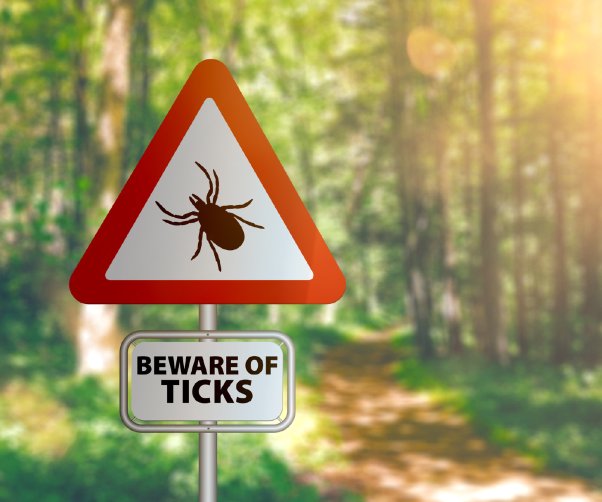
Early Signs of Lyme Disease: Recognizing the Symptoms
Lyme disease is a tick-borne illness caused by a bacteria that can have a broad range of clinical symptoms depending on the stage of infection. Early detection is crucial for effective treatment and prevention of complications. In this article, we spoke with Infectious Diseases Physician Shirin Mazumder, MD, at Methodist Le Bonheur Healthcare to shed light on the very earliest signs of Lyme disease and the importance of recognizing them promptly.
What are the very earliest signs of Lyme disease?
Early signs of Lyme disease tend to occur anywhere from 3-30 days after a tick bite. These symptoms may include:
- Fever
- Poor appetite
- Headache
- Fatigue
- Neck stiffness
- Muscle and joint aches
A key indicator of early Lyme disease is the development of a rash called erythema migrans. This rash occurs in up to 80% of people with early Lyme disease and typically begins at the site of the tick bite. It gradually enlarges and may resemble a target or "bulls-eye" appearance. It is important to note that the rash is usually not painful or itchy but can be warm to the touch.
Early Lyme Disease Symptoms that Often Go Unnoticed
Some of the early symptoms of Lyme disease can be nonspecific and easily mistaken for other medical conditions. These symptoms may include fever, headaches, fatigue, enlarged lymph nodes, and muscle and joint pain. In some cases, individuals may not experience a rash, leading them to believe they do not have Lyme disease. However, it is possible to have Lyme disease without the presence of a rash. The rash itself can vary in appearance, and sometimes it may go unnoticed.
Key Facts and Prevention Tips
To further educate the public about Lyme disease, Dr. Shirin Mazumder shares some important facts and prevention tips:
1. Geographic Concentration of Lyme Disease
Lyme disease is more concentrated in certain parts of the United States, including states in the Northeast, mid-Atlantic, North Central, and West Coast regions. While cases can be diagnosed in unexpected areas, they are usually travel-related.
2. Tick Transmission and Removal
Ticks that transmit Lyme disease in the US include the deer and western black-legged ticks. Transmission of the bacteria typically requires the tick to be attached for at least 36 hours. Removing the tick within 24 hours greatly reduces the chances of acquiring Lyme disease. Conduct thorough tick checks after outdoor exposure, especially in high-risk areas.
3. Pets and Lyme Disease
Pets, such as dogs, can contract Lyme disease, but there is no evidence that they can directly spread the infection to humans. However, infected ticks can be brought into the home by pets, potentially causing infection in humans. Promptly remove ticks from pets and consult a veterinarian about tick prevention products.
5. Vaccine Trials and Lyme Disease Prevention
Currently, there is no vaccine available to prevent Lyme disease; however, vaccine trials are underway. Until a vaccine becomes available, it is essential to prioritize preventive measures.
SUBSCRIBE TO OUR BLOG
and you'll receive more health & wellness tips right in your inbox.
SUBSCRIBE NOWTop Lyme Disease Prevention Tips
Dr. Mazumder provides several recommendations for protecting yourself and your loved ones from Lyme disease:
1. Personal Protective Measures
Take personal protective measures to minimize tick exposure, especially during the warmer months from April through September. Use EPA-registered insect repellants containing DEET, picaridin, or lemon eucalyptus oil. Treat clothing and camping gear with products containing 0.5% permethrin.
2. Dressing Appropriately
When heading outdoors, wear long-sleeved shirts and pants. Tuck shirts into pants and pants into socks to reduce gaps where ticks can enter. Avoid wearing clothing with mesh or holes, as ticks can easily squeeze through. Opt for light-colored clothing to make it easier to spot ticks.
3. Conducting Tick Checks
After spending time outdoors, conduct a thorough tick check on your body using a handheld or full-length mirror. Pay attention to areas such as underarms, around the ears, belly button, in the hair, back of the knees, around the waist, and between the knees. Remember to check clothing, gear, and animals for ticks as well. Tumble-dry clothing on high heat in the dryer for 10 minutes to kill ticks. Taking a shower within 2 hours of returning home can also help reduce the risk of Lyme disease.
4. Antibiotic Prophylaxis
For individuals at higher risk of Lyme disease, antibiotic prophylaxis may be an option after a tick bite. This additional preventive measure should be discussed with a physician and considered if the tick exposure occurred in a high-risk region, the tick was attached for 36 hours, and the antibiotic treatment can be started within 72 hours of tick removal. However, it is important to note that this does not replace other preventive measures.
Stay Informed and Take Action
By familiarizing yourself with the early signs and symptoms of Lyme disease and adopting preventive measures, you can minimize the risk of infection. Remember to consult with healthcare professionals for personalized advice and guidance. Together, we can protect ourselves and our communities from tick-borne illnesses.
For more information about Lyme disease or to schedule a consultation, contact your primary care physician at Methodist Le Bonheur Healthcare today!
View Primary Care ServicesRelated Articles


